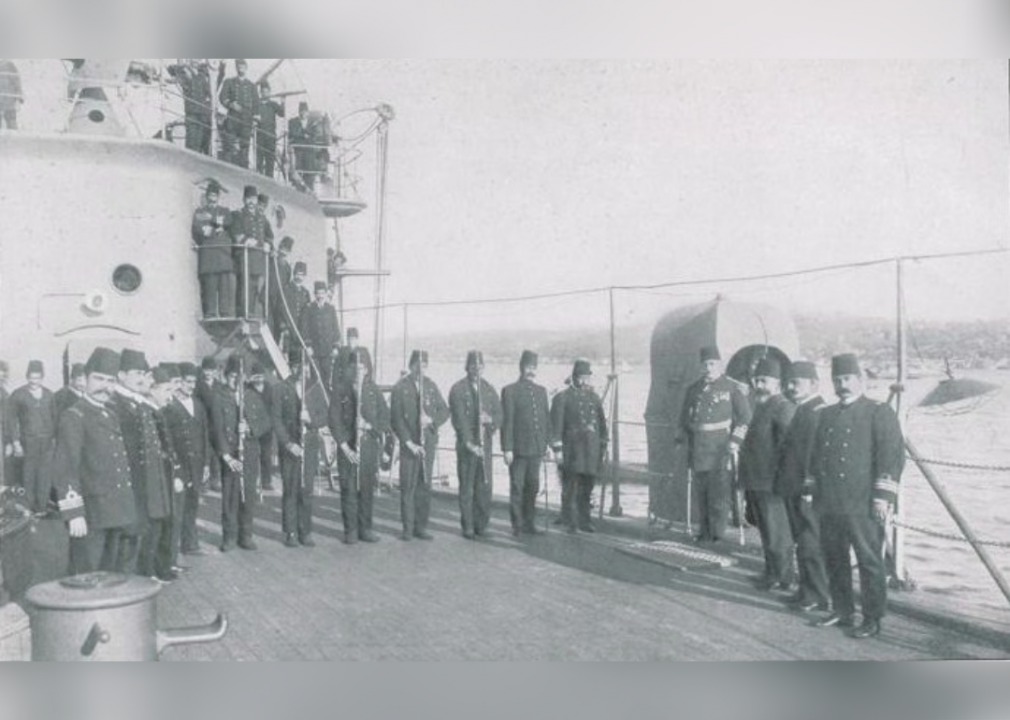

Of the 1,153 passengers on the Lusitania, 118 Americans died President Wilson therefore warned the Germans that another aggressive act would provoke the United States to war. Americans still believed in their right, as members of a neutral nation, to travel unharmed. The Germans had placed numerous newspaper ads warning Americans not to travel aboard the Lusitania, which was carrying munitions but masquerading as an ocean liner. The first expression of the German U-boat's offensive power was the sinking of the Lusitania in May, 1915. It was only mobilized offensively in response to the British blockade. Ironically, the U-boat was originally intended as a defensive craft. All Allied ships in those waters would be torpedoed ( true enough, because captains of German submarines couldn't distinguish one type of ship from another, anyway). In 1915 the Germans declared British waters a war zone. Their most effective weapon was the submarine, which although still primitive, took the British by surprise. In response to the British blockade, the Germans tried to blockade England. The United States reversed its position when it entered the war against Germany, and international law was changed. The United States still believed in the difference between contraband and raw goods and supported Germany's right to receive the imports that it needed to survive. In 1915, England, in support of France, blockaded Germany, disregarding the regulation. This regulation was a response by continental Europe against England, which had the most powerful navy and could strangle the economy of any continental nation with a blockade of the sea. "Non-contraband" cargoes like food, cloth, and raw goods could not be regulated through a blockade countries could still import and trade these items. "Contraband," defined as weapons and other materials used in military manufacturing, could be controlled and blockaded during a war. Thomas Buttersworth (1768–1842) Alternative names t.In 1909, an international law was agreed upon that differentiated between "contraband" and "non-contraband" shipping.

Following his return to London, he was appointed Marine Painter to the East India Company and added commissioned ship portraits to his already prolific output of naval battle scenes. Paintings such as the ‘Nelson's Inshore Blockading Squadron at Cadiz, July 1797’ (BHC0499) probably reflect events he witnessed. He served on the ‘Caroline’ during the Napoleonic Wars and was invalided home from Minorca in 1800. In 1795 he is documented as enlisting on board HM receiving ship ‘Enterprise’ in London. Several of the 27 watercolours by him in the NMM are mounted on sheets from 18th-century printed signal and muster books. Thomas Buttersworth (1768–1842), like many other British marine painters, was a seaman who recorded his experiences in paint and charcoal. In the late 18th century and early 19th century a scene like this fulfilled the audience’s appetite for romantic and adventurous narratives, also reflected in contemporary literature. Here, a fire reveals further raid-related action on the beach. In the background, topographical features – which may relate to the British Channel coast – can be seen. Across dark waves, which are lit dramatically out of tempestuous clouds, a smuggler is trying to escape. English: A Smuggling Lugger Chased by a Naval Brig This seascape of a smuggler being chased by a brig at night uses established theatrical means to create a sensation of adventure for the viewer. This image could have imperfections as it’s either historical or reportage.

Alamy charges you a fee for access to the high resolution copy of the image. This image is a public domain image, which means either that copyright has expired in the image or the copyright holder has waived their copyright.


 0 kommentar(er)
0 kommentar(er)
